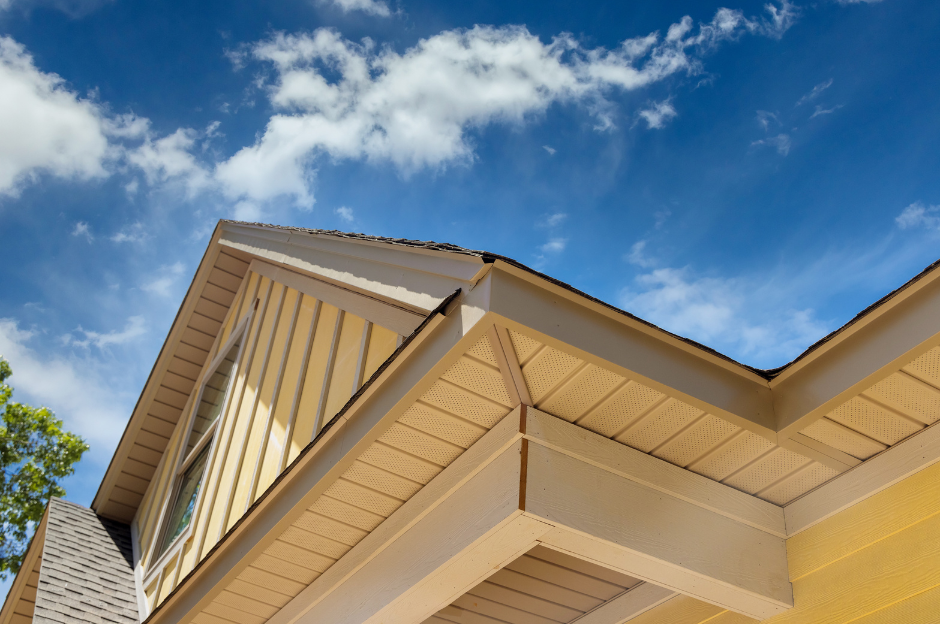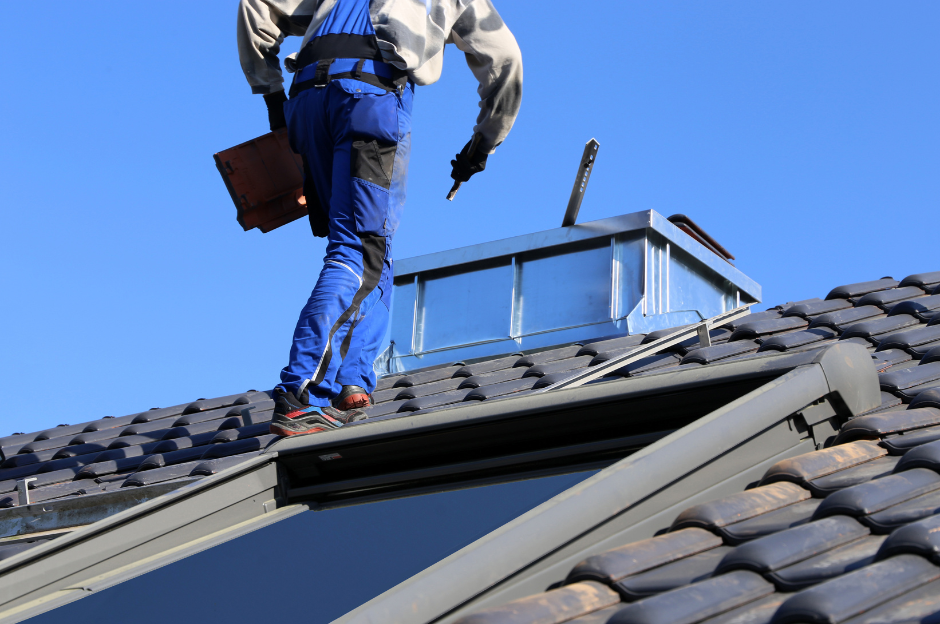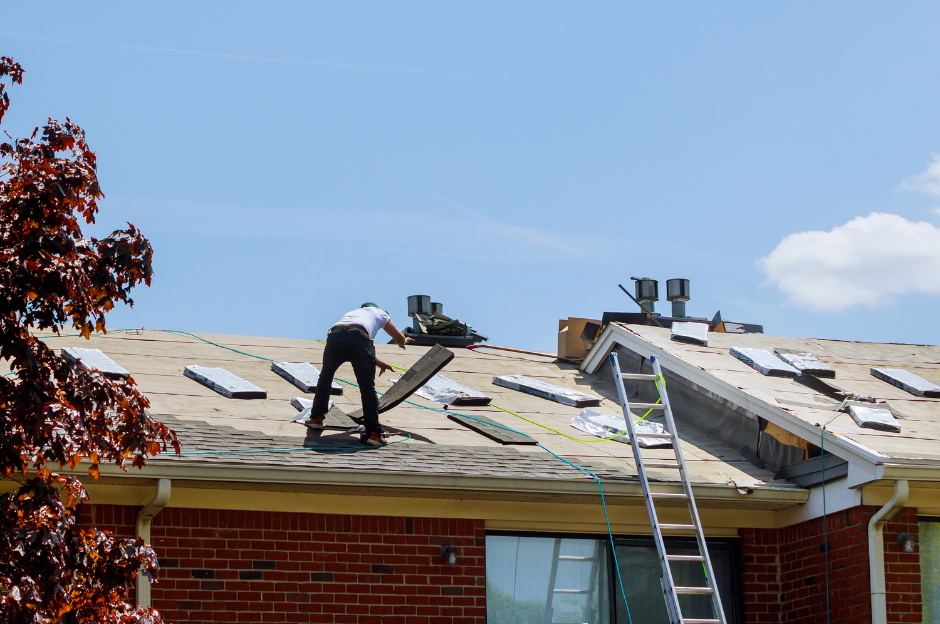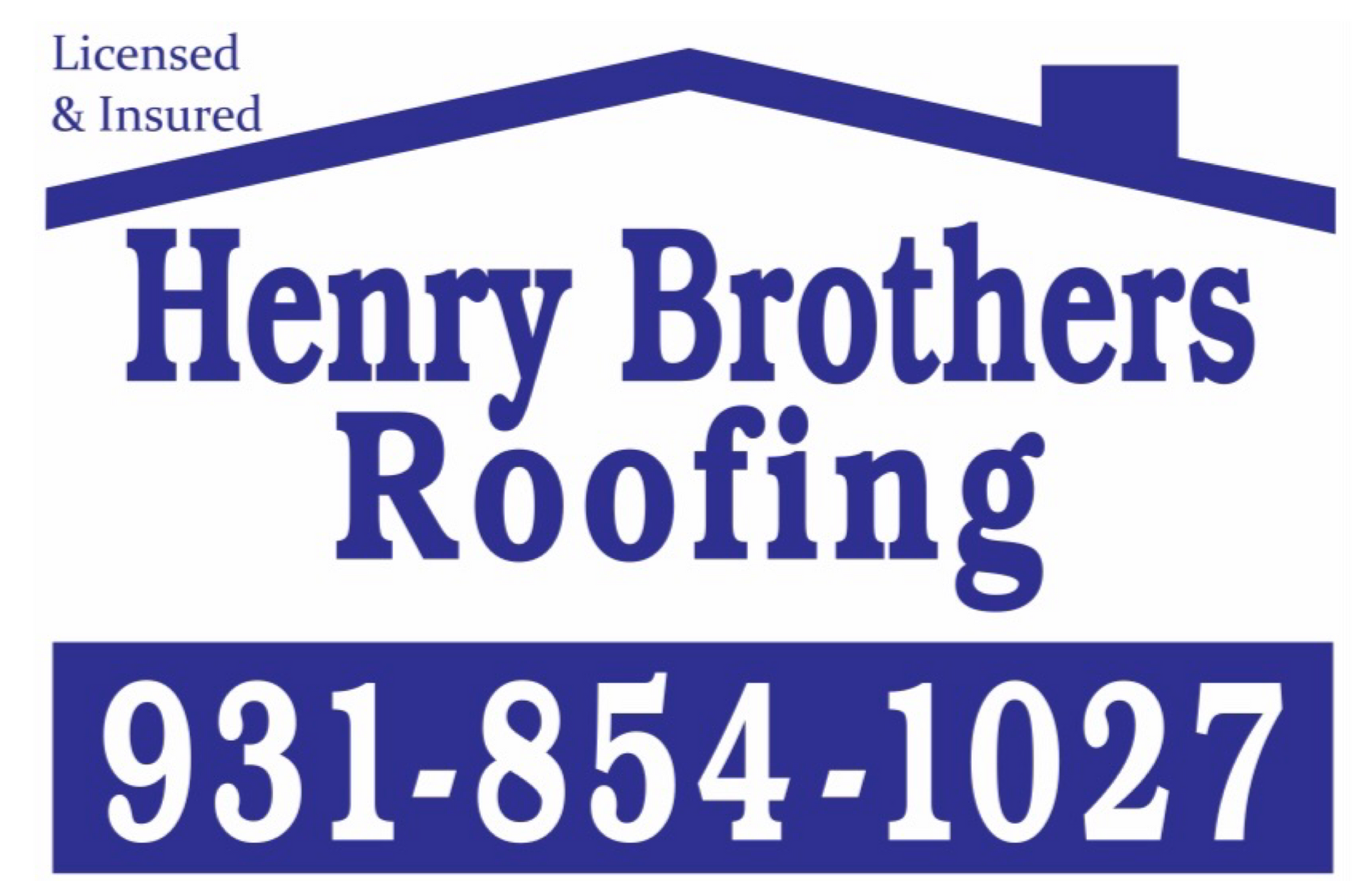Weatherproofing Your Home: Essential Roofing Solutions
April 12, 2024

Your home's roof is its first line of defense against the elements, shielding you and your belongings from rain, wind, snow, and sunlight. Over time, however, exposure to weather can take its toll, leading to damage, leaks, and other issues that compromise the integrity of your roof. In this blog post, we'll explore essential roofing solutions to weatherproof your home, ensuring that your roof remains strong, durable, and protective for years to come.
Understanding the Importance of Weatherproofing:
Weatherproofing your roof is essential for several reasons:
Protection: A weatherproof roof protects your home and belongings from water damage, mold, rot, and other issues caused by leaks and moisture infiltration.
Energy Efficiency: A well-insulated and weatherproofed roof helps maintain consistent indoor temperatures, reducing the strain on your heating and cooling systems and lowering energy bills.
Longevity: Proper weatherproofing extends the lifespan of your roof, reducing the need for costly repairs and replacements down the line.
Property Value: A well-maintained and weatherproof roof enhances the curb appeal and resale value of your home, attracting potential buyers and increasing marketability.
Essential Roofing Solutions for Weatherproofing:
Regular Inspections: Schedule regular inspections of your roof to identify any signs of damage, wear, or deterioration. Look for missing or damaged shingles, cracked flashing, sagging areas, and water stains on the ceiling or walls.
Repair Damage Promptly: Address any issues or damage to your roof promptly to prevent further deterioration and costly repairs. Replace missing or damaged shingles, repair flashing, and seal any leaks or gaps to maintain the integrity of your roof.
Proper Ventilation: Ensure proper attic ventilation to prevent moisture buildup and condensation, which can lead to mold growth and roof damage. Install ridge vents, soffit vents, and attic fans to promote airflow and reduce humidity levels.
Quality Materials: Use high-quality roofing materials that are durable, weather-resistant, and designed to withstand the elements. Choose asphalt shingles, metal roofing, or tile roofing that offers superior protection and longevity for your home.
Gutter Maintenance: Keep gutters and downspouts clean and free of debris to ensure proper drainage and prevent water backup on your roof. Install gutter guards to prevent leaves, twigs, and other debris from clogging the gutters and causing water damage.
Flashing Installation: Install flashing around chimneys, vents, skylights, and other roof penetrations to prevent water infiltration and leaks. Use durable materials such as metal or rubber flashing that are resistant to corrosion and deterioration.
Ice and Water Shield: Install ice and water shield membrane along the eaves and valleys of your roof to protect against ice dams and water penetration. This self-adhesive membrane creates a watertight barrier that prevents leaks and damage caused by melting snow and ice.
Proper Installation: Ensure that your roof is installed correctly by hiring a reputable roofing contractor with experience and expertise in weatherproofing techniques. Proper installation is crucial for maximizing the longevity and performance of your roof.
Regular Maintenance: Implement a regular maintenance routine for your roof, including cleaning gutters, trimming overhanging branches, and inspecting for signs of damage or wear. Address any issues promptly to prevent further damage and ensure the continued protection of your home.
Benefits of Weatherproofing Your Roof:
Weatherproofing your roof offers several benefits for homeowners:
Protection: Weatherproofing protects your home and belongings from water damage, mold, and other issues caused by leaks and moisture infiltration.
Energy Efficiency: A well-insulated and weatherproofed roof helps maintain consistent indoor temperatures, reducing energy consumption and lowering utility bills.
Longevity: Proper weatherproofing extends the lifespan of your roof, reducing the need for costly repairs and replacements in the future.
Property Value: A well-maintained and weatherproof roof enhances the curb appeal and resale value of your home, attracting potential buyers and increasing marketability.
Conclusion:
Weatherproofing your home's roof is essential for protecting your investment, ensuring the longevity of your roof, and maintaining a comfortable and energy-efficient living environment. By implementing essential roofing solutions such as regular inspections, prompt repairs, proper ventilation, and quality materials, you can weatherproof your roof and safeguard your home against the elements for years to come. Invest in the maintenance and upkeep of your roof today to enjoy the benefits of a secure, durable, and weather-resistant home for the future.
Henry Brothers Blog

Multi-family buildings pose unique challenges for roofing—requiring durable, efficient, and cost-effective solutions that serve multiple households simultaneously. Selecting the right system and partner can significantly impact long-term maintenance and energy bills. Common Roofing Challenges in Multi-Family Properties Large surface areas Multiple penetrations (vents, HVAC units) Noise and disruption during installation High foot traffic for maintenance Energy efficiency Efficient Roofing Materials TPO (Thermoplastic Polyolefin): Lightweight, reflective, and energy-efficient. Ideal for flat or low-slope roofs. Modified Bitumen: Offers durability and weather resistance. Works well for larger structures. Metal Roofing: Long-lasting and low-maintenance. Higher upfront costs but excellent ROI. Asphalt Shingles: Budget-friendly and easy to repair. Better for pitched multi-family homes. Affordability Strategies Bulk Purchasing Discounts: Roofers often offer lower rates for large-scale projects. Energy Rebates and Tax Credits: Cool roofing materials may qualify for incentives. Roof Coatings: Extend lifespan and defer full replacements. Preventive Maintenance Plans: Regular inspections reduce major repair costs. Partnering with the Right Contractor Choose a roofing contractor experienced in multi-family dwellings. Look for: References from similar projects Warranty offerings Insurance and licensing Clear timelines and communication protocols

Your roof is one of the most defining features of your home’s architecture. A well-designed roof complements the style, era, and character of your house, enhancing both curb appeal and value. Whether you own a modern home, a Victorian masterpiece, or a Mediterranean villa, choosing the right roofing materials and design is essential. This article explores custom roofing solutions for different architectural styles, ensuring your roof is both aesthetic and functional. 1. Why Custom Roofing Matters A one-size-fits-all approach doesn’t work for roofing. Here's why customization is key: 🏡 Preserves Architectural Integrity The roof should match the home's era and design. A poorly chosen roof can clash with the architecture and reduce property value. 💰 Boosts Home Value & Curb Appeal A well-matched roof enhances visual appeal, making your home stand out. Homebuyers prefer houses with roofs that fit the overall design. 🌦 Enhances Durability & Efficiency Custom roofing accounts for climate, slope, and insulation. Choosing the right materials ensures longer roof life and energy efficiency. 2. Best Roofing Materials for Different Architectural Styles 🏗 Modern & Contemporary Homes Modern architecture focuses on clean lines, minimalism, and energy efficiency. Best Roofing Options: ✅ Flat Roofs – Achieve a sleek, contemporary look. ✅ Metal Roofing – Durable and complements modern aesthetics. ✅ Green Roofs – Eco-friendly and visually striking. ✅ Solar Panels – Integrate renewable energy solutions. 🏰 Victorian & Gothic Revival Homes These homes have steep-pitched roofs, turrets, and elaborate detailing. Best Roofing Options: ✅ Slate Tiles – Classic, long-lasting, and historically accurate. ✅ Wood Shingles – Adds charm and natural beauty. ✅ Decorative Metal Accents – Enhances ornate Victorian designs. 🏝 Mediterranean & Spanish-Style Homes Inspired by European coastal homes, these feature stucco walls and curved archways. Best Roofing Options: ✅ Clay or Terracotta Tiles – Traditional, weather-resistant, and elegant. ✅ Concrete Tiles – Durable and available in various textures and colors. ✅ Synthetic Spanish Tiles – Modern, lightweight alternatives with classic appeal. 🌲 Rustic & Cabin-Style Homes These homes emphasize natural materials and a cozy aesthetic. Best Roofing Options: ✅ Wood Shakes – Blends seamlessly with wooded surroundings. ✅ Metal Roofing (Rustic Finish) – Durable with a weathered, natural look. ✅ Green Roofs – Enhances sustainability and insulation. 🏡 Colonial & Traditional Homes These timeless homes focus on symmetry and classic proportions. Best Roofing Options: ✅ Asphalt Shingles – Affordable and available in classic shades. ✅ Slate Roofing – Elegant and historically accurate. ✅ Copper or Metal Accents – Enhances historic charm. 🏛 Mid-Century Modern Homes This style features low-sloped roofs, large windows, and open spaces. Best Roofing Options: ✅ Flat or Low-Slope Roofs – Clean, minimalistic aesthetic. ✅ Rubber or Membrane Roofing – Ideal for low-pitch roofs. ✅ Green or Living Roofs – Complements eco-conscious designs. 🏰 Tudor-Style Homes Tudor homes have steeply pitched gables and decorative half-timbering. Best Roofing Options: ✅ Wood or Synthetic Shake Shingles – Traditional and authentic. ✅ Slate Roofing – Enhances historic charm and durability. ✅ Architectural Asphalt Shingles – Mimics wood or slate at a lower cost. 3. Custom Roofing Features to Consider Beyond materials, adding customized elements can elevate your roof’s design. 🔹 Roof Color & Texture Dark roofs enhance historic and formal homes. Light-colored roofs reflect heat, ideal for warm climates. Textured materials (slate, shakes) add visual depth. 🏠 Roof Shape & Pitch Steep roofs fit Gothic and Victorian styles. Flat or low-sloped roofs match modern homes. Custom pitches enhance energy efficiency and durability. 🔆 Skylights & Roof Windows Adds natural light and enhances ventilation. Works well in modern, contemporary, and rustic homes. 🌞 Solar Roofing & Smart Technology Solar shingles blend seamlessly into modern & eco-friendly homes. Smart roofing systems adjust ventilation & insulation automatically. 4. Custom Roofing: How to Get Started 1️⃣ Consult a Roofing Expert Work with an architect or contractor specializing in custom roofs. Ensure they understand historical accuracy and climate considerations. 2️⃣ Choose High-Quality Materials Invest in durability, energy efficiency, and aesthetics. Select roofing that aligns with your home’s style and longevity needs. 3️⃣ Consider Long-Term Costs & ROI Some materials have higher upfront costs but last longer and increase home value. Energy-efficient options can reduce heating and cooling expenses. 4️⃣ Verify Local Building Codes Some roofing styles require special permits. Ensure compliance with HOA guidelines and historical district regulations.


